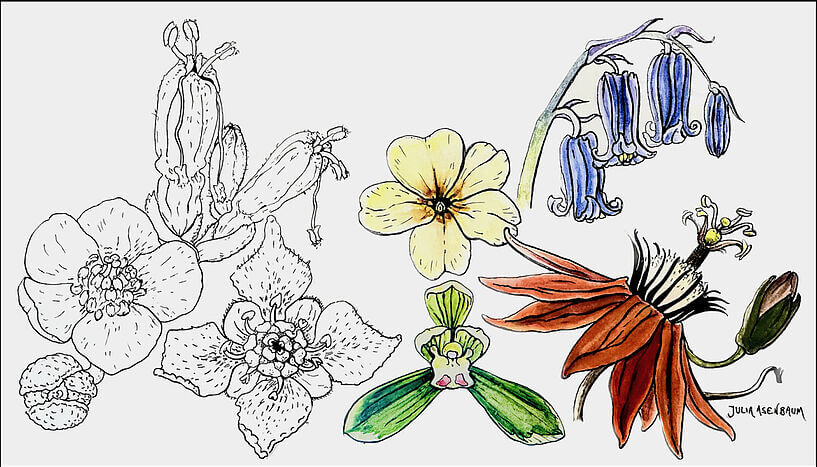VIENNA, Austria — Flowers were more diverse 100 million years ago than they are today, research reveals. Scientists in Austria have found that shortly after their emergence in the Cretaceous period, flowering plants had already produced a wide array of different flower types. In fact, during this “blooming” period, floral diversity surpassed that of present-day Earth.
Flowering plants, with at least 300,000 species, currently form the largest group of plants on Earth. They first appeared at least 140 million years ago, during the era when dinosaurs roamed the planet.
To obtain their findings, the research team analyzed 121 fossilized flowers and compared them with 1,201 contemporary samples. The results of this comparison show that these ancient flowers exhibited much more variation than the species we see today.
“Interestingly, it turned out that the Early Cretaceous flowers were on average more different from each other than today’s flowers, even though there are many more species of flowering plants on Earth today,” explains Marion Chartier from the Department of Botany and Biodiversity Research at the University of Vienna, in a media release.
“Our results are fascinating because we only know a relatively small number of flowers from the Early Cretaceous, but this small number showed more variability than a thousand living species sampled for the study,” adds Andrea López, the study’s co-leading author from the National Autonomous University of Mexico.

The researchers examined 30 floral characteristics in the samples to assess floral diversity and investigate patterns of floral evolution over time and across different lineages. They discovered that the historical plants were significantly more varied from each other, despite having fewer species. This evolutionary pattern is similarly observed in many animal groups, including dinosaurs and fish.
“For flowering plants, one possible explanation for this pattern is that when the group first evolved, floral organization was more flexible and novel flower types could evolve more easily. This flexibility may have allowed flowering plants, within a few million years of their origin, to adapt to the different animals that pollinated their flowers and dispersed their fruits” explains Dr. Maria von Balthazar from the University of Vienna.
“Our analyses clearly show that the morphological diversity of a given group does not necessarily correlate with species richness of that same group. In fact, some of the most species-rich groups of flowering plants, such as orchids and the daisy family, have managed to produce thousands of species while maintaining the same floral organization,” notes Professor Jürg Schönenberger.
The team also discovered that certain combinations of features were theoretically possible, but apparently never produced by evolution and some particularly successful flower types arose independently several times.
The full study is published in the journal New Phytologist.
You might also be interested in:
- Best Garden Flowers: Top 5 Beautiful Blooms Most Recommended By Experts
- Origins of flowers traced back to fossilized plants from 126 million years ago
- Study reveals what world’s earliest flowers looked like
South West News Service writer Isobel Williams contributed to this report.

